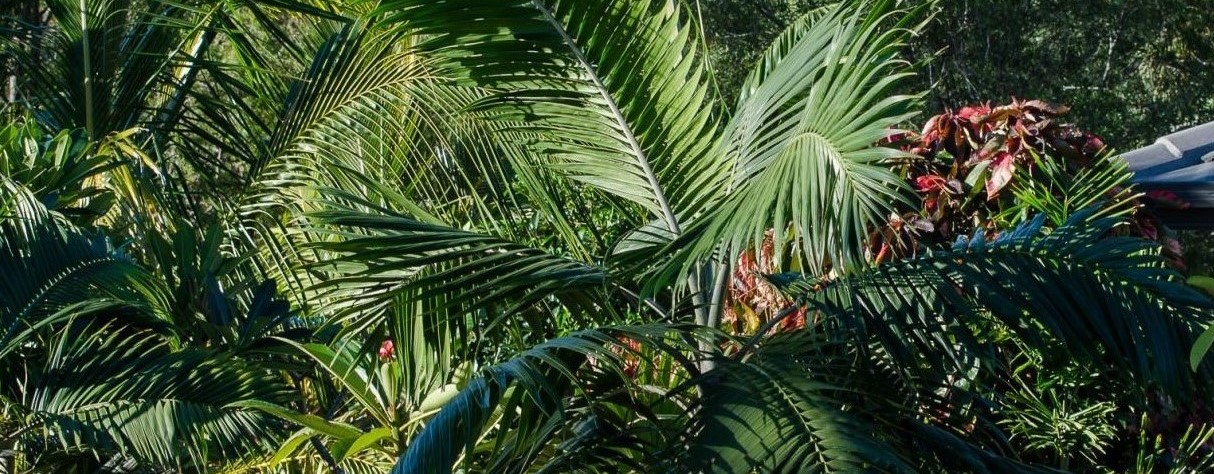
Hurricane Palm, scientifically known as Licuala ramsayi, is a magnificent and iconic palm tree that is native to the northeastern parts of Australia. With its distinct hurricane-like appearance, this palm has captured the attention of plant enthusiasts and nature lovers around the world. This impressive tree is not just visually stunning, but it also holds numerous fascinating facts that make it truly extraordinary. From its unique growth patterns to its remarkable resilience in the face of harsh weather conditions, Hurricane Palm has a lot to offer. In this article, we will explore 11 astounding facts about Hurricane Palm that will give you a deeper appreciation for this botanical wonder.
Key Takeaways:
- Hurricane Palm is a resilient palm tree, not an actual hurricane, known for its ability to withstand strong winds and diverse environmental conditions, making it a popular choice for gardens and coastal landscapes.
- With its slow growth, fan-shaped leaves, edible fruits, and cultural significance, Hurricane Palm adds elegance and tropical vibes to gardens, symbolizing longevity, strength, and resilience in Mediterranean cultures.
Hurricane Palm is not a real hurricane.
Contrary to its name, Hurricane Palm does not refer to an actual weather phenomenon. It is in fact a type of palm tree known for its remarkable resilience and ability to withstand strong gusts of wind.
Hurricane Palm is native to tropical and subtropical regions.
This palm species, scientifically known as Chamaerops humilis, is native to Mediterranean countries such as Spain, Italy, and Morocco. It thrives in warm and sunny climates.
Hurricane Palm can tolerate a wide range of environmental conditions.
One of the reasons why Hurricane Palm is so popular among gardeners is its ability to adapt to various soil types and light conditions. It can tolerate both full sun and partial shade and is resilient to drought.
Hurricane Palm is a slow-growing palm tree.
Unlike some other palm species, Hurricane Palm has a slow growth rate. It typically grows at a rate of only a few inches per year, making it an excellent choice for landscaping or indoor cultivation.
Hurricane Palm has fan-shaped leaves.
The leaves of the Hurricane Palm are fan-shaped, with multiple segments that give it a unique and attractive appearance. These leaves can grow up to 2 feet in length.
Hurricane Palm can reach a height of 20 feet.
Although it is a slow-growing palm, Hurricane Palm can eventually reach a height of up to 20 feet. Its compact size and elegant form make it ideal for smaller gardens or as a potted plant.
Hurricane Palm produces small yellow flowers.
In the spring, this palm tree produces small, inconspicuous yellow flowers. While not particularly showy, these flowers contribute to the overall aesthetic appeal of the plant.
Hurricane Palm produces edible fruits.
After flowering, the Hurricane Palm yields small round fruits that turn dark purple when ripe. These fruits are edible and have a sweet, date-like flavor.
Hurricane Palm is low-maintenance.
One of the reasons why gardeners love Hurricane Palm is its low-maintenance nature. It requires minimal pruning and is generally resistant to pests and diseases.
Hurricane Palm has cultural significance.
In Mediterranean cultures, the Hurricane Palm is often associated with longevity, strength, and resilience. It is a symbol of endurance and is commonly used in landscaping and as an ornamental tree.
Hurricane Palm is a popular choice for coastal landscapes.
Due to its ability to withstand strong winds and salt spray, Hurricane Palm is a favored palm tree for coastal landscapes. Its hardiness and attractive appearance make it a perfect fit for beachside gardens.
Overall, the 11 Astounding Facts About Hurricane Palm highlight the unique qualities and versatility of this remarkable palm species. Whether you want to add a touch of elegance to your garden or bring a piece of the tropics indoors, the Hurricane Palm is an excellent choice.
Conclusion
Hurricane Palm is truly an astounding plant, with its impressive features and resilience. From its ability to withstand strong winds and storms to its vibrant and striking appearance, this palm tree is a remarkable addition to any landscape. Whether you’re a fan of tropical aesthetics or simply want to create a sturdy and beautiful focal point in your garden, Hurricane Palm is definitely worth considering.
With its unique traits and adaptability, it’s no wonder why Hurricane Palm is a favorite among gardeners and landscaping enthusiasts. By learning about its growth habits, care requirements, and the benefits it offers, you can make informed decisions about integrating this amazing plant into your outdoor spaces.
So, go ahead and explore the world of Hurricane Palm. Let its strong presence and striking beauty inspire you to create a garden that can weather any storm.
FAQs
Q: How tall does a Hurricane Palm grow?
A: Hurricane Palm can grow to be around 30-40 feet tall on average. However, some well-maintained specimens have been known to reach heights of 50 feet or more.
Q: Does Hurricane Palm require a lot of sunlight?
A: Yes, Hurricane Palm thrives in full sunlight. It requires at least 6-8 hours of direct sunlight daily to grow and develop properly. Lack of sunlight can result in stunted growth and a decline in overall health.
Q: Can Hurricane Palm withstand strong winds and storms?
A: Yes, Hurricane Palm is known for its exceptional durability in windy and stormy conditions. Its flexible trunk and strong root system allow it to bend and sway without breaking, making it an ideal choice for regions prone to hurricanes and strong winds.
Q: How often should I water a Hurricane Palm?
A: Initially, after planting, you should water the palm deeply and frequently to help establish its root system. Once established, it is recommended to water the Hurricane Palm regularly, about once a week during dry periods. However, be sure not to overwater, as it can lead to root rot.
Q: Does Hurricane Palm require pruning?
A: Yes, Hurricane Palm can benefit from occasional pruning to maintain its shape and remove dead or damaged fronds. It is advisable to hire a professional tree service to carry out the pruning, as improper pruning can harm the palm.
Q: Can Hurricane Palm grow in cold climates?
A: No, Hurricane Palm is a tropical plant and cannot tolerate freezing temperatures. It thrives in USDA hardiness zones 10-11, where the minimum average temperature does not drop below 30°F (-1°C).
Q: Is Hurricane Palm resistant to diseases and pests?
A: Yes, Hurricane Palm is generally resistant to common diseases and pests. However, it can be susceptible to fungal infections if overwatered or if proper drainage is not provided.
Q: How long does it take for a Hurricane Palm to grow?
A: The growth rate of Hurricane Palm can vary depending on various factors like climate, soil conditions, and care. On average, it takes around 10-15 years for the palm to reach its full height.
Q: Can I grow Hurricane Palm indoors?
A: While Hurricane Palm prefers outdoor conditions, it is possible to grow it indoors if you can provide adequate sunlight, humidity, and space for its growth. However, it is essential to ensure proper ventilation and temperature control to prevent the palm from suffering in indoor environments.
Q: Does Hurricane Palm produce edible fruit?
A: No, Hurricane Palm does not produce edible fruit. Its primary appeal lies in its majestic appearance and ability to withstand adverse conditions.
Hurricane Palm's captivating qualities make it a must-have for tropical gardens, but there's more to discover in the world of plants and nature. Dive into the fascinating realm of climate adaptation and learn how species are evolving to survive in changing environments. Explore the vibrant world of tropical plants like bromeliads, with their stunning colors and unique adaptations. For those passionate about outdoor gardening, uncover the secrets behind the delicate beauty of freesias and how to cultivate them in your own backyard. Embark on a journey of knowledge and inspiration as you unravel the mysteries of the natural world.
Was this page helpful?
Our commitment to delivering trustworthy and engaging content is at the heart of what we do. Each fact on our site is contributed by real users like you, bringing a wealth of diverse insights and information. To ensure the highest standards of accuracy and reliability, our dedicated editors meticulously review each submission. This process guarantees that the facts we share are not only fascinating but also credible. Trust in our commitment to quality and authenticity as you explore and learn with us.


